Bitter orange marmalade, also known as Seville orange marmalade, is a delicious and sophisticated conserve that stands out among fruit preserves. It is made from Sicilian bitter oranges and boasts an intense orange flavor that appeals to those seeking a more adventurous taste. The popularity of this zesty marmalade is undeniable, especially on a relaxed Sunday morning when you can savor it with toast or fresh bread.
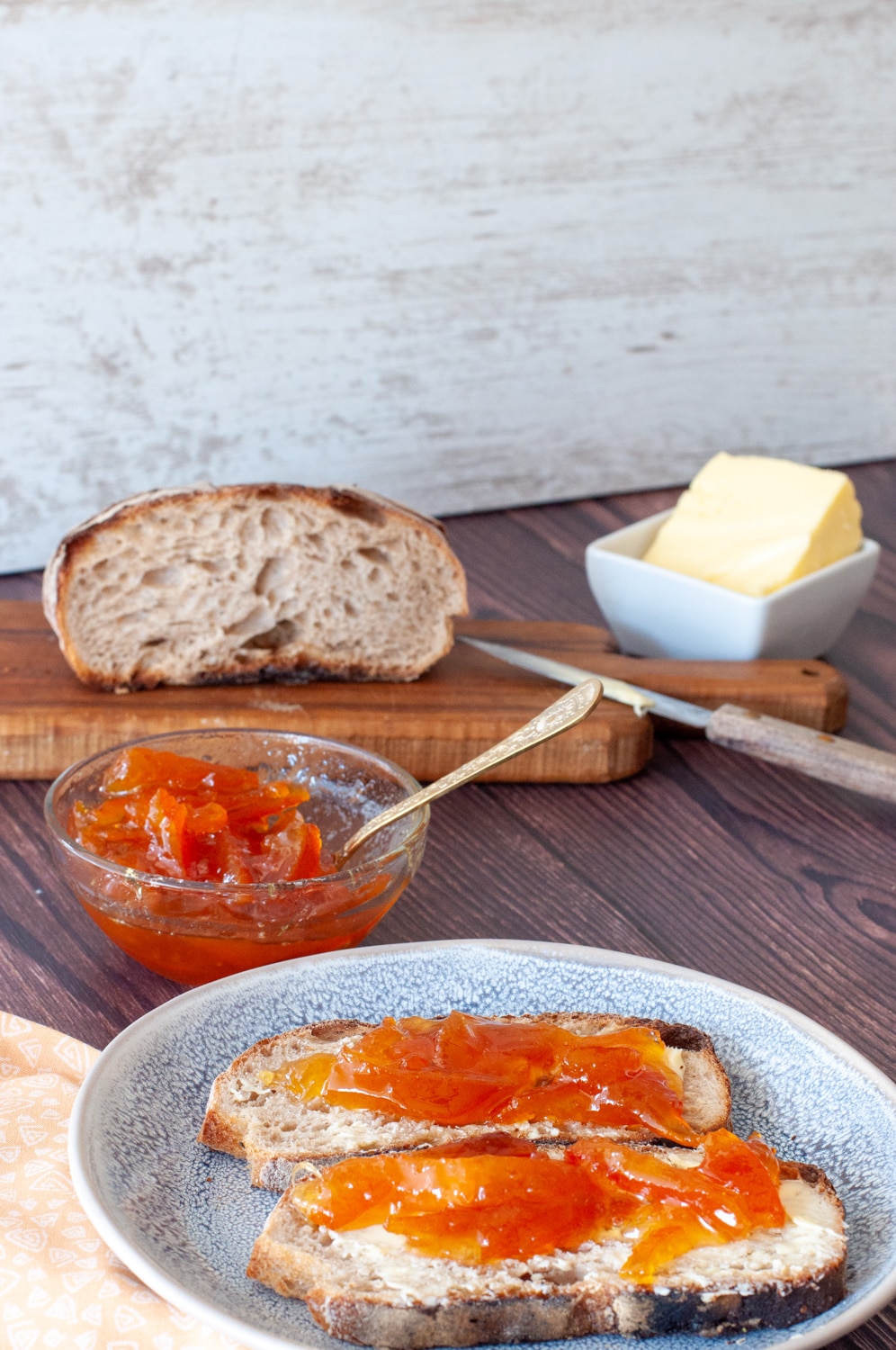
Jump to:
Embarking on a journey to make your own bitter orange marmalade can be a rewarding experience, allowing you to customize the flavor and consistency to your liking.
Your resulting marmalade will bring an unforgettable taste sensation to your breakfast table.
With the right recipe in hand, you'll find marmalade making to be a fun and fulfilling project.
This is an old recipe from a convent in Sicily where nuns would preserve their garden produces by making jams, liqueurs, and conserves.
You'll discover that the key to achieving the perfect bitter marmalade lies in carefully selecting the freshest bitter oranges and following a clear set of instructions.
For more fruit preserve recipes, you can read: concord grape jam, concord grape jelly, balsamic fig glaze, apricot jam, peach jam

Ingredients
To make a delicious batch of citrus marmalade, you'll need some essential ingredients like citrus fruits, sugar, and water.
The rind of the citrus fruit provides a burst of flavor and a natural source of pectin, contributing to the unique texture and taste of the marmalade.
Traditional bitter orange marmalades use bitter Seville oranges (scientific name citrus aurantium)
These sour oranges are citrus fruit that is a hybrid of mandarin oranges and grapefruits.
They have thick, yellow-orange skin, and their flesh is extremely sour and bitter.
Although the raw fruit itself is not usually eaten, its juice, rind, and zest are used in various cuisines.
The city of Seville, in southern Spain, played a crucial role in the history of marmalade as Britain began importing fragrant and bitter fruit for making marmalade.
Spain now grows approximately 15,000 tonnes of Seville oranges every year to meet this demand.
Seville orange season is from the end of December to mid-February
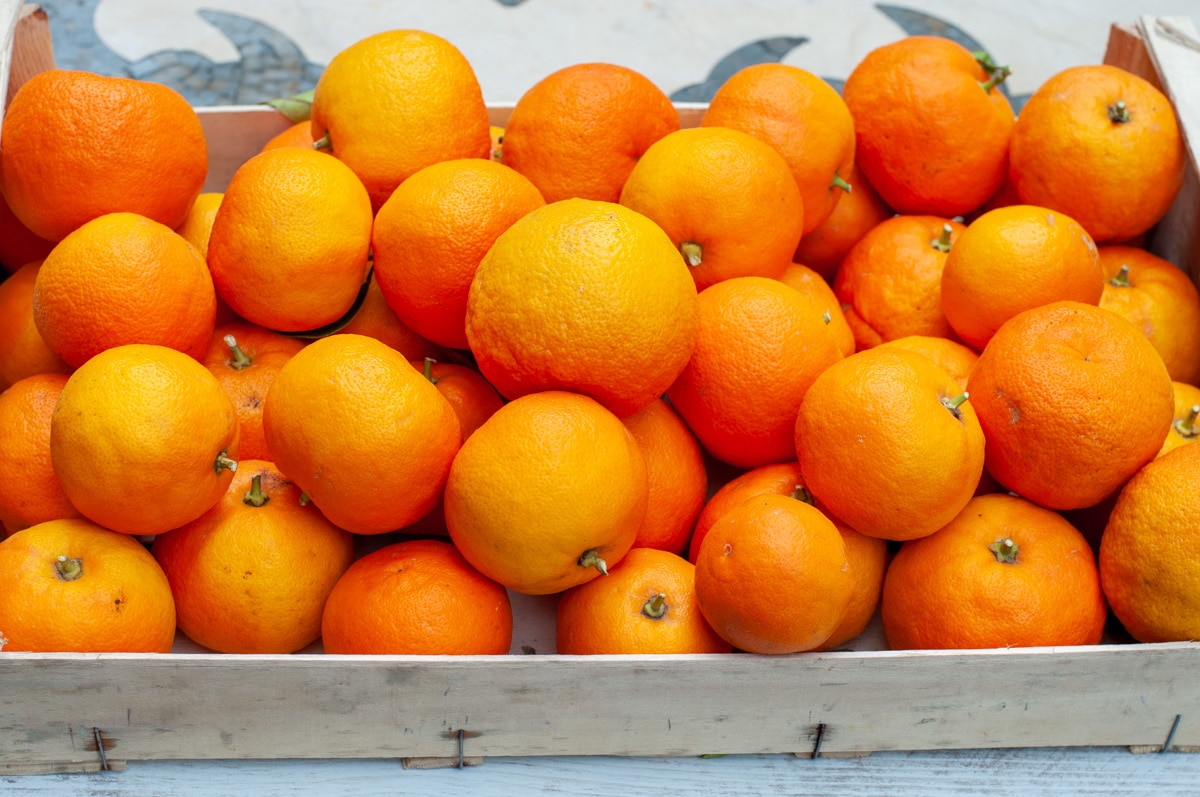
Instructions
Bitter orange marmalade recipes can vary, but there are essential steps that you must follow in order to achieve a delicious and sophisticated preserve.
Plan ahead of time, as this recipe requires 4 days of preparation.
DAY 1
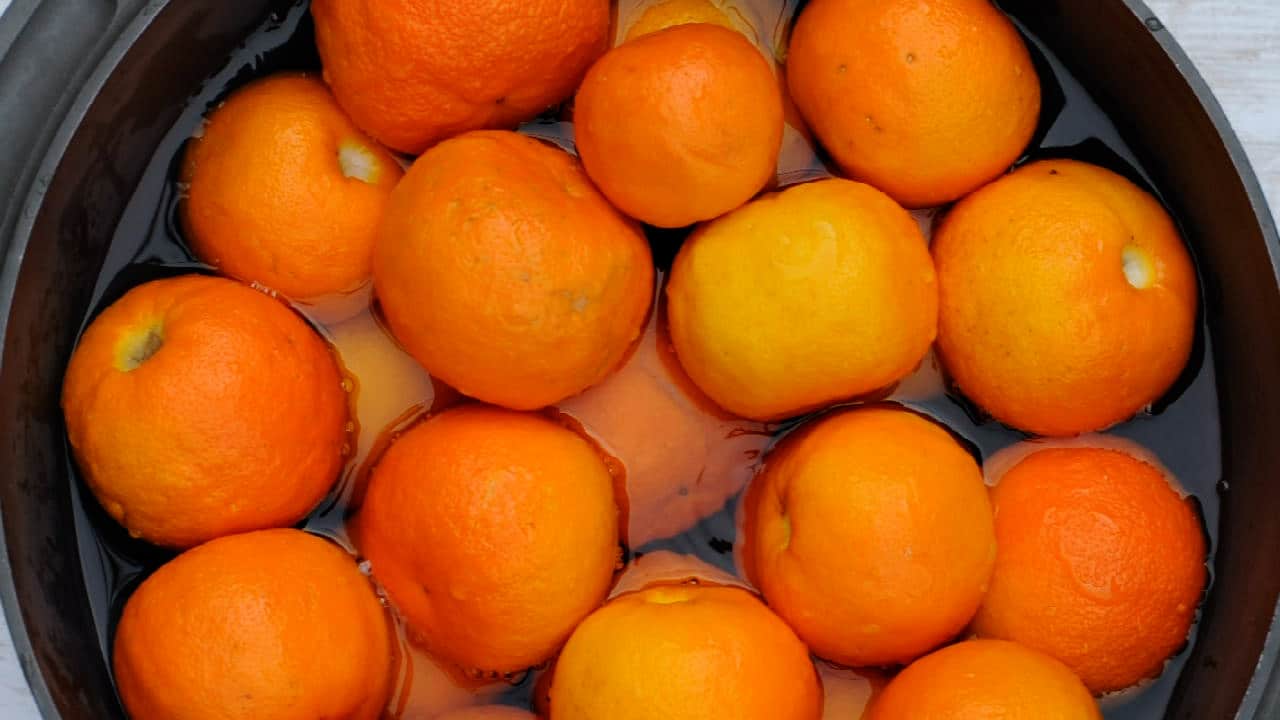
- Boil the whole bitter oranges in water until they become so soft that you can pierce them from side to side with a needle.
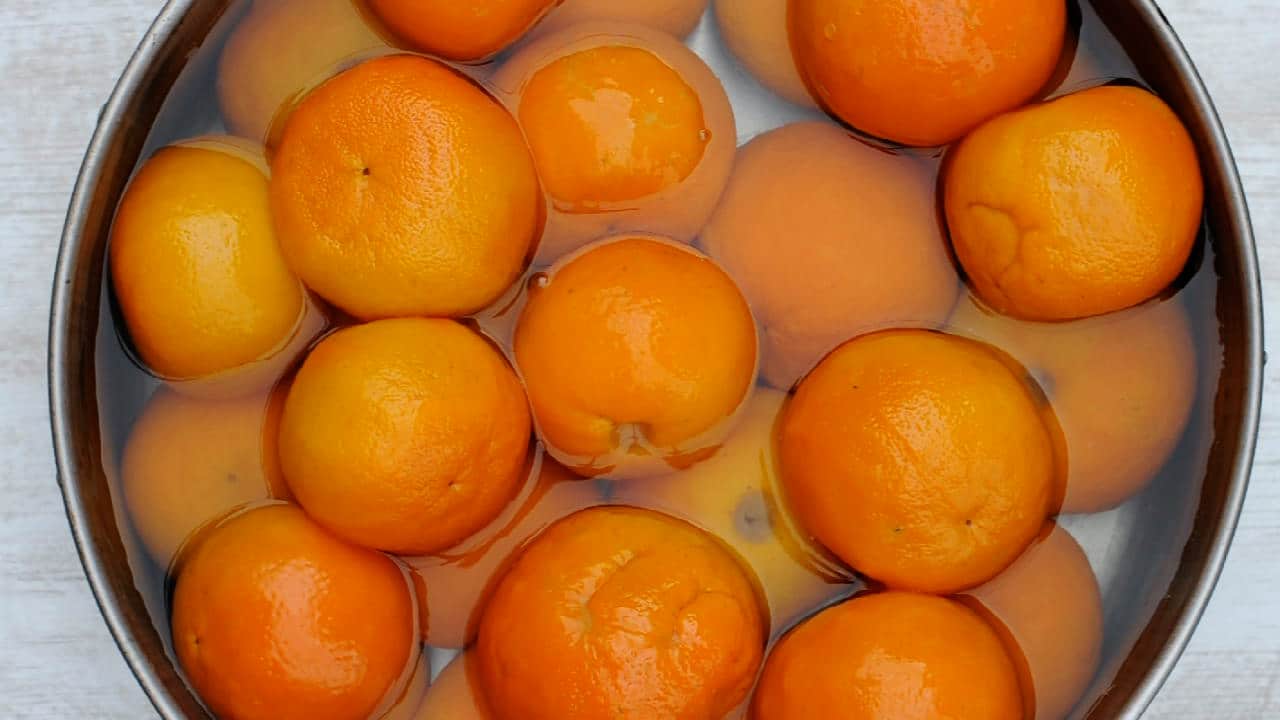
- Drain them and place them in cold water
DAY 2 and 3
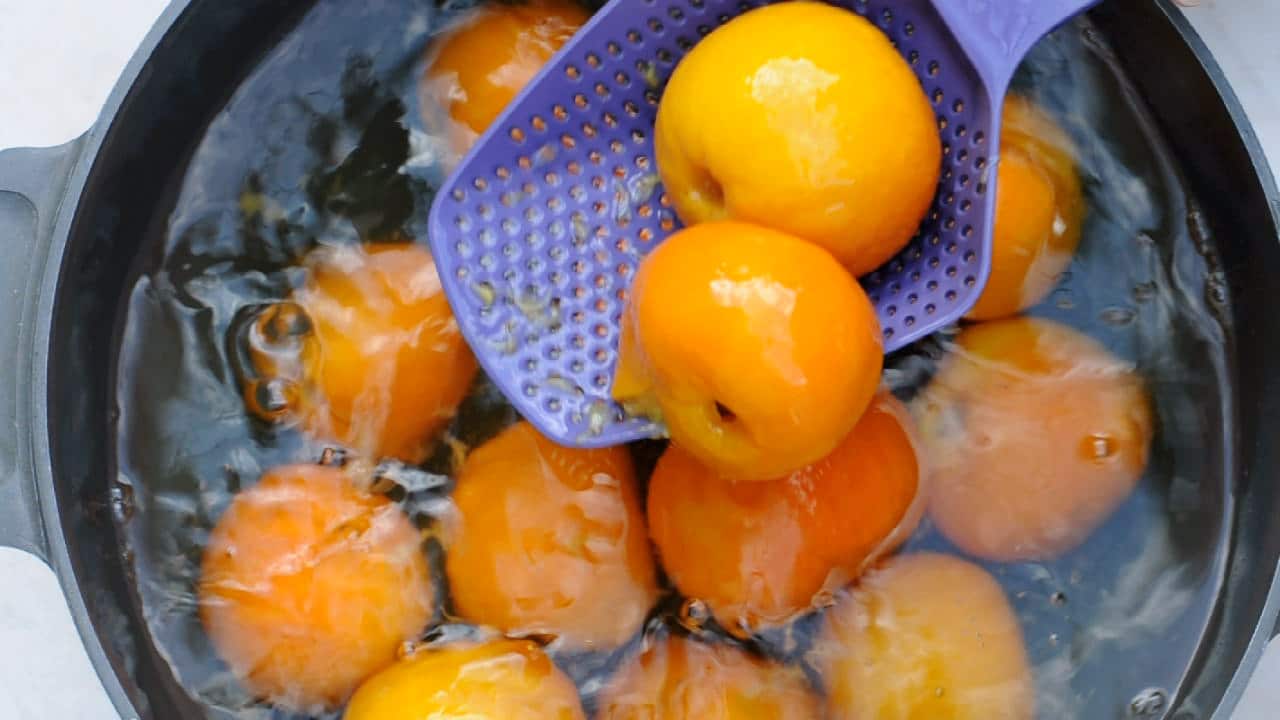
- Leave them soaking in water for 2 days, changing the water 3 times per day
DAY 4
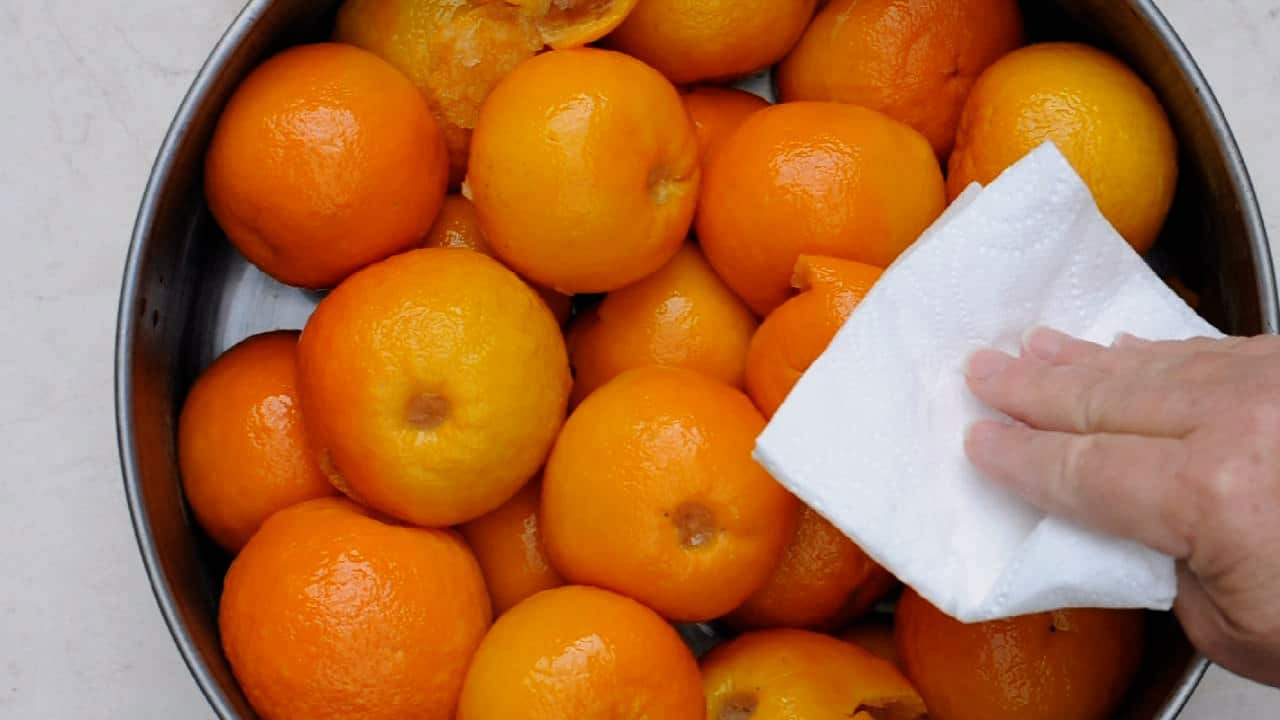
- The next day drain them and let them dry as much as possible
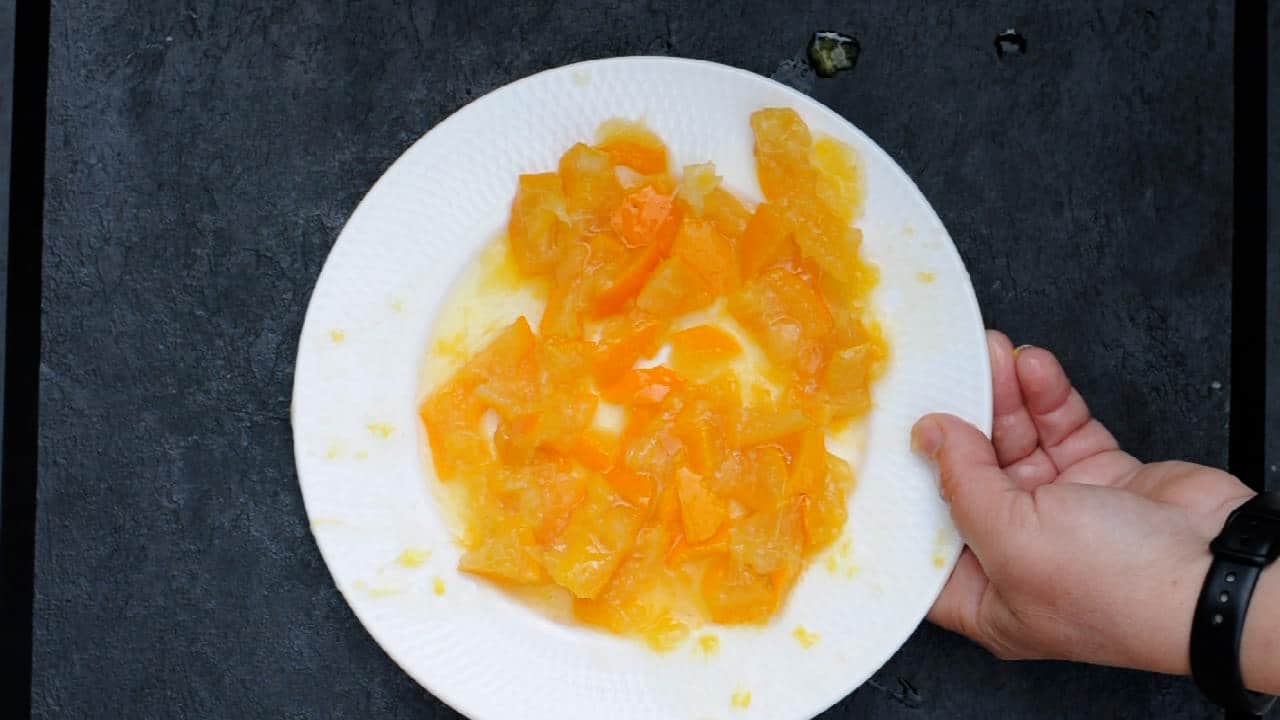
- With a sharp knife, cut the orange peel into small slices removing the inner membranes and the seeds
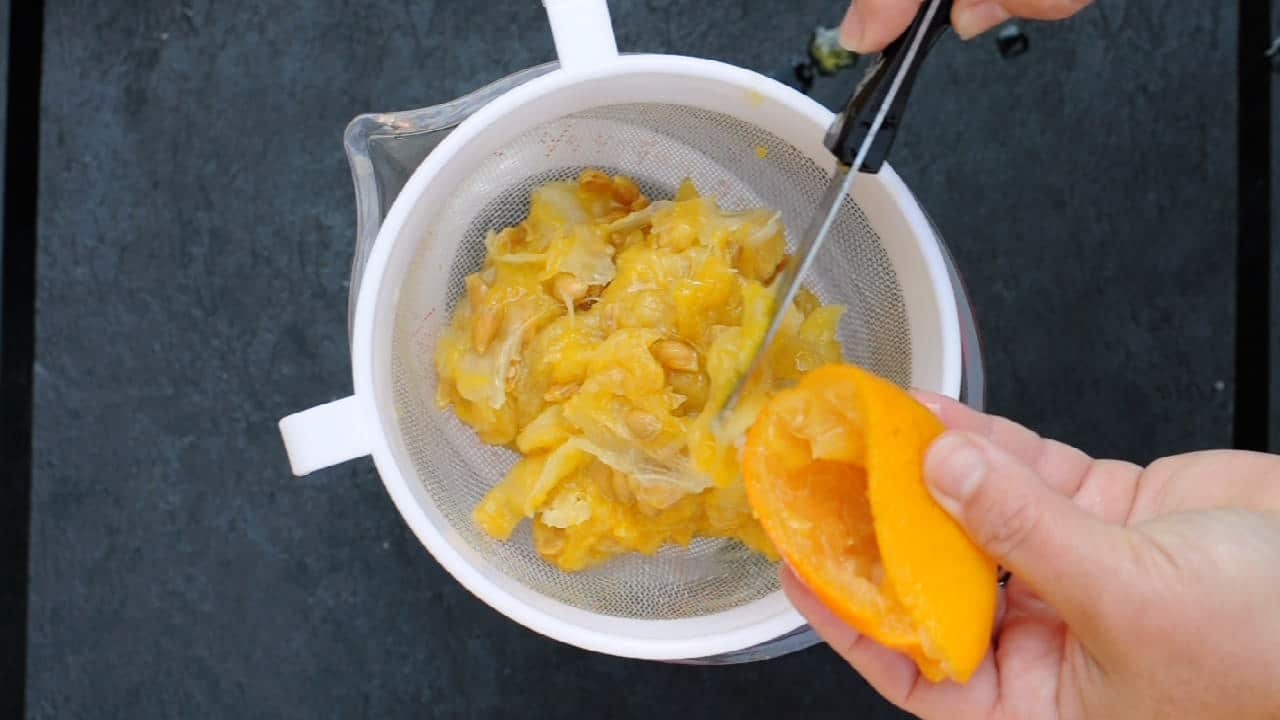
- Squeeze all the remaining juices and pour them with the oranges
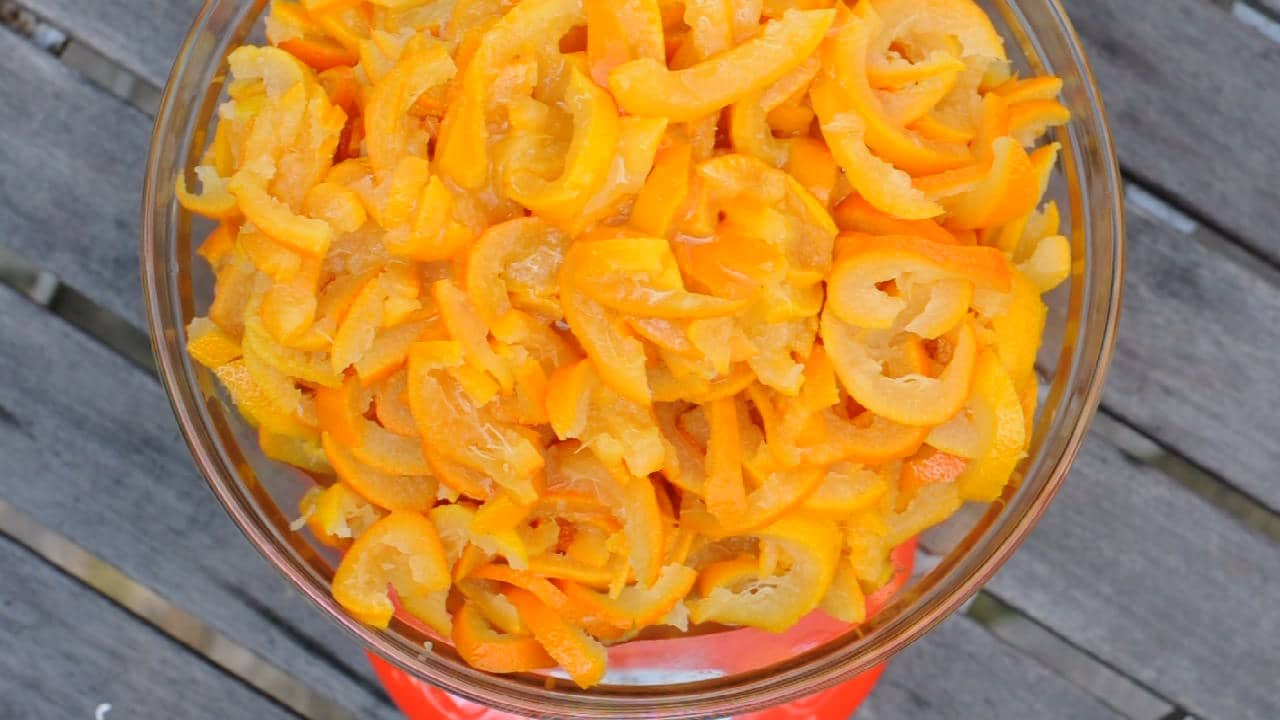
- Weight the oranges and calculate the amount of sugar as 1.5 times the weight of the fruit (for 1 lb of oranges add 1.5 lb of sugar)
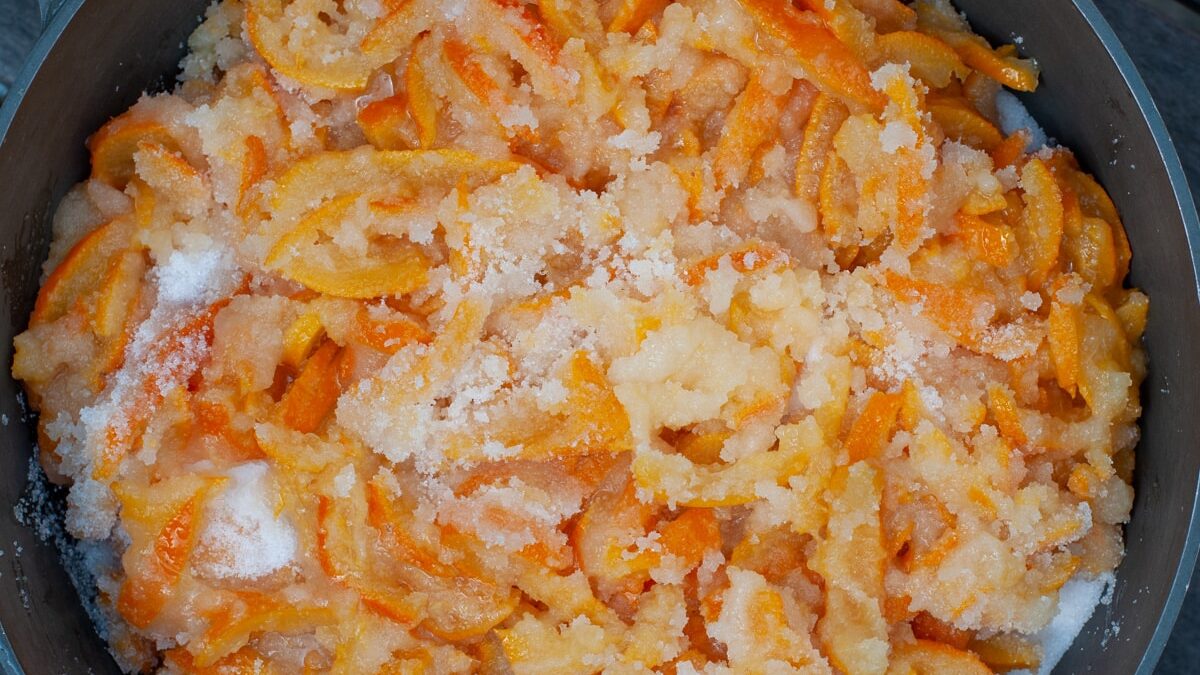
- Place the oranges and the sugar in a large pan to simmer at medium heat for 2 hours until it reaches the right consistency
Hint: you do not need to add any water
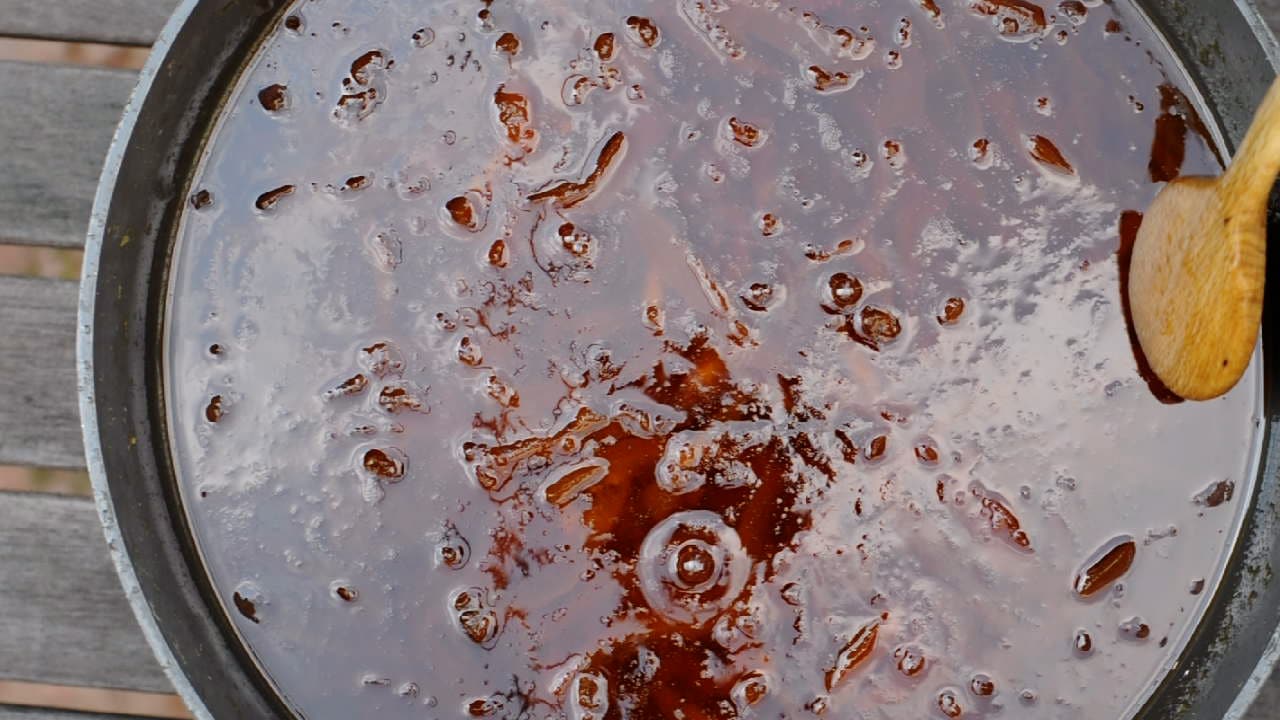
- Test your marmalade set by placing a small amount on a cold plate and letting it cool. If it wrinkles when gently pushed with a finger, it's ready.
Top tips
When cooking the marmalade, you should pay attention to the cooking time and temperature.
Generally, marmalades need to be simmered for a few hours to achieve the desired set and texture.
This process also allows the flavors to meld and develop, resulting in a better taste.
Keep an eye on the marmalade, and make sure to stir occasionally to prevent sticking and scorching.
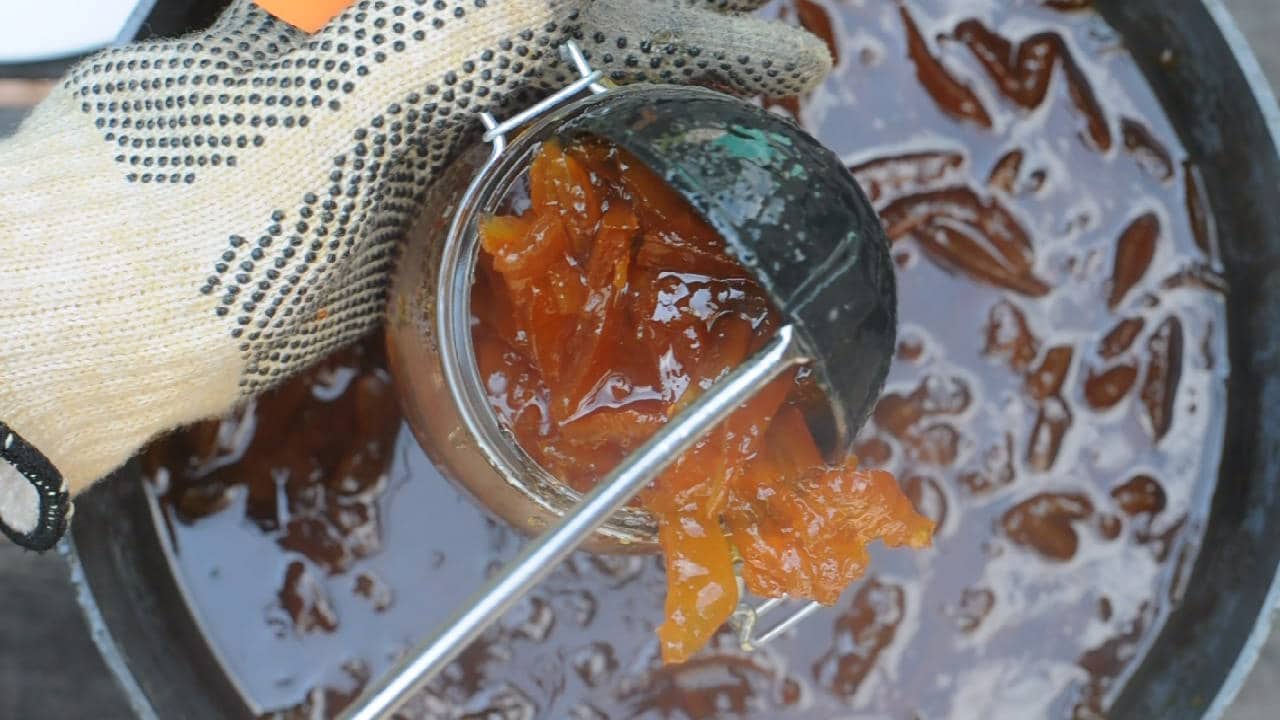
- Once your marmalade has reached its desired set and texture, carefully transfer it into sterilized jars, leaving enough room for the lids.
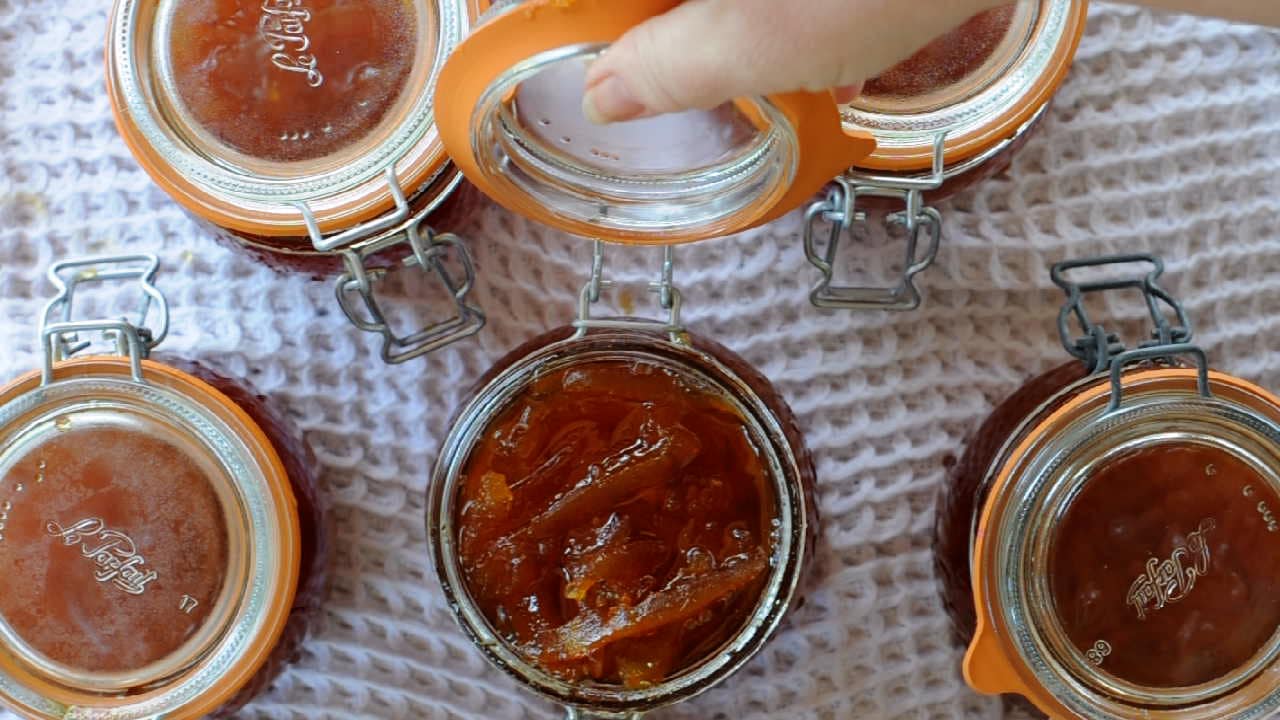
- Properly seal the jars and store them in a cool, dark place.
Pectin and Setting Point
Pectin is essential in creating the correct consistency for marmalades and jams.
It helps thicken the mixture and, when cooked and cooled, creates a stable, jelly-like texture.
Bitter oranges, lemons, and grapefruit all contain natural pectin in their peels, pith, and seeds.
In the case of bitter orange marmalade, you will be using the entire fruit, including the pulp, rind, and some seeds, to extract lot of pectin.
When preparing your marmalade, reaching the correct setting point or temperature at which the pectin will set is important.
This is usually between 220°F to 222°F (104°C to 106°C), which you can measure using a candy thermometer.
Be sure to monitor the temperature and cook the marmalade until it reaches the setting point for optimal consistency.
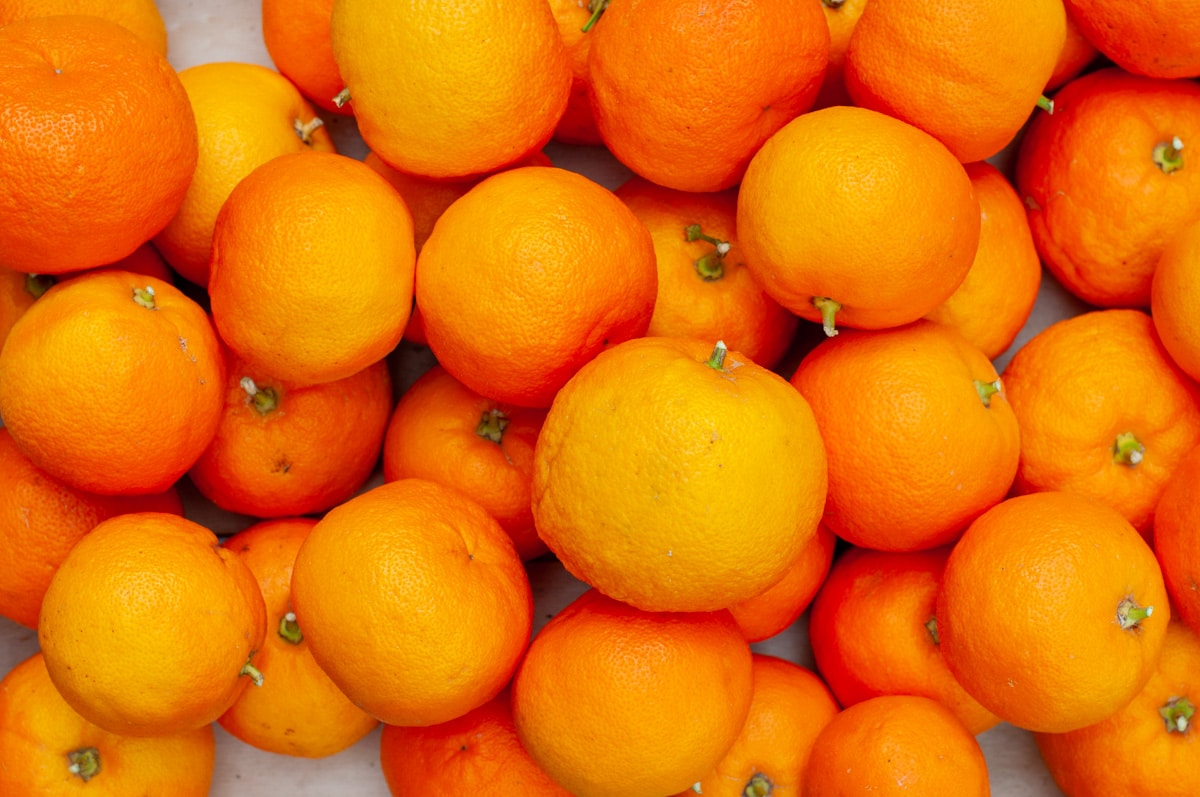
Storage and Preservation
When it comes to storing your bitter orange marmalade, there are several factors to consider, such as room temperature and how to effectively seal the jars.
To ensure that your marmalade stays fresh and delicious, follow these steps:
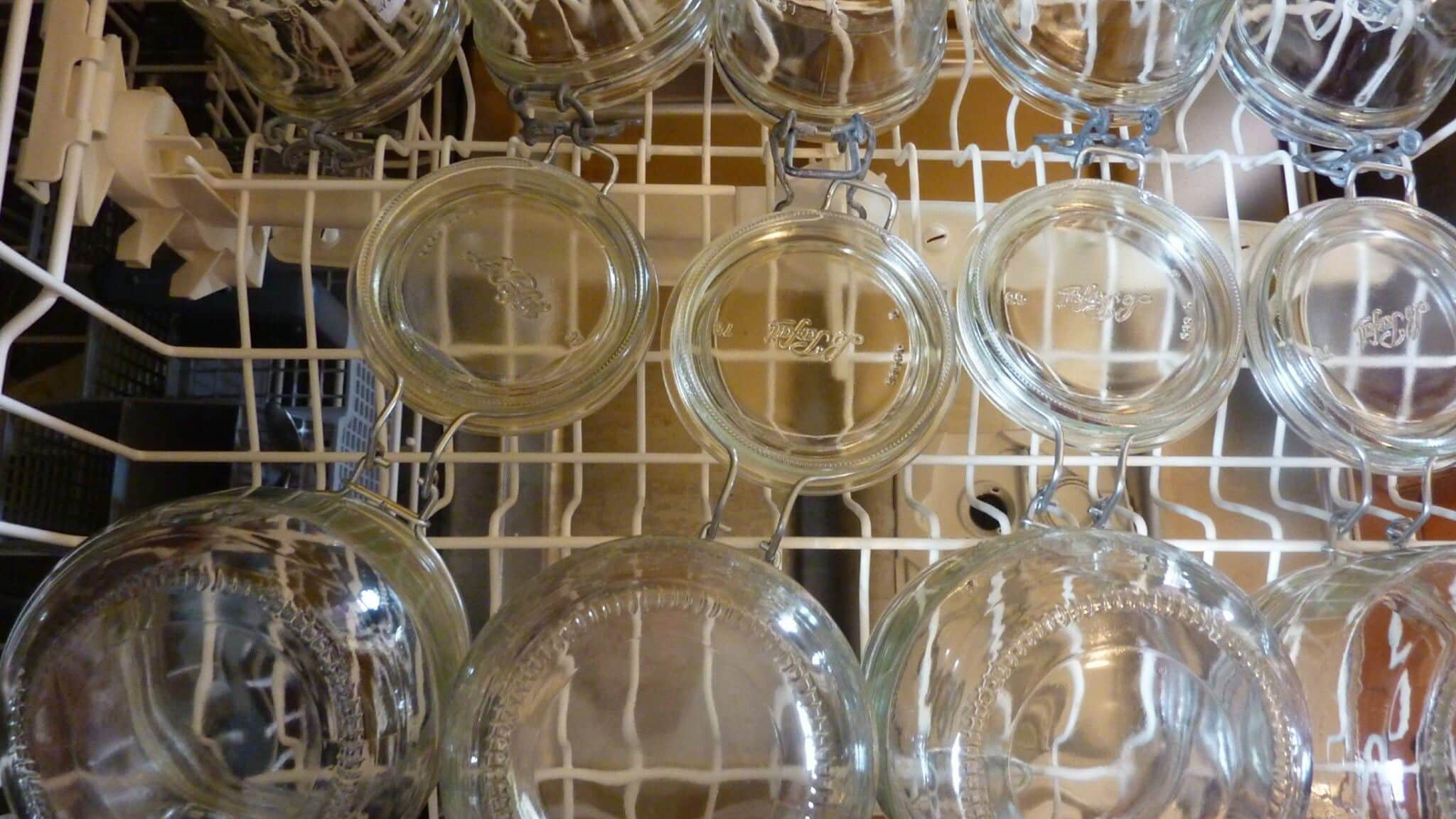
- Sterilize the jars: Before storing your marmalade, make sure to sterilize the jars. You can do this by boiling them in water for about 10 minutes or washing them in the dishwasher. This will help eliminate bacteria that may affect the freshness of your marmalade.

- Fill the jars: When your marmalade has finished cooking, carefully ladle it into the sterilized jars. It is important to fill the jars when both the marmalade and jars are still hot, as this will help create a vacuum seal once they cool down.
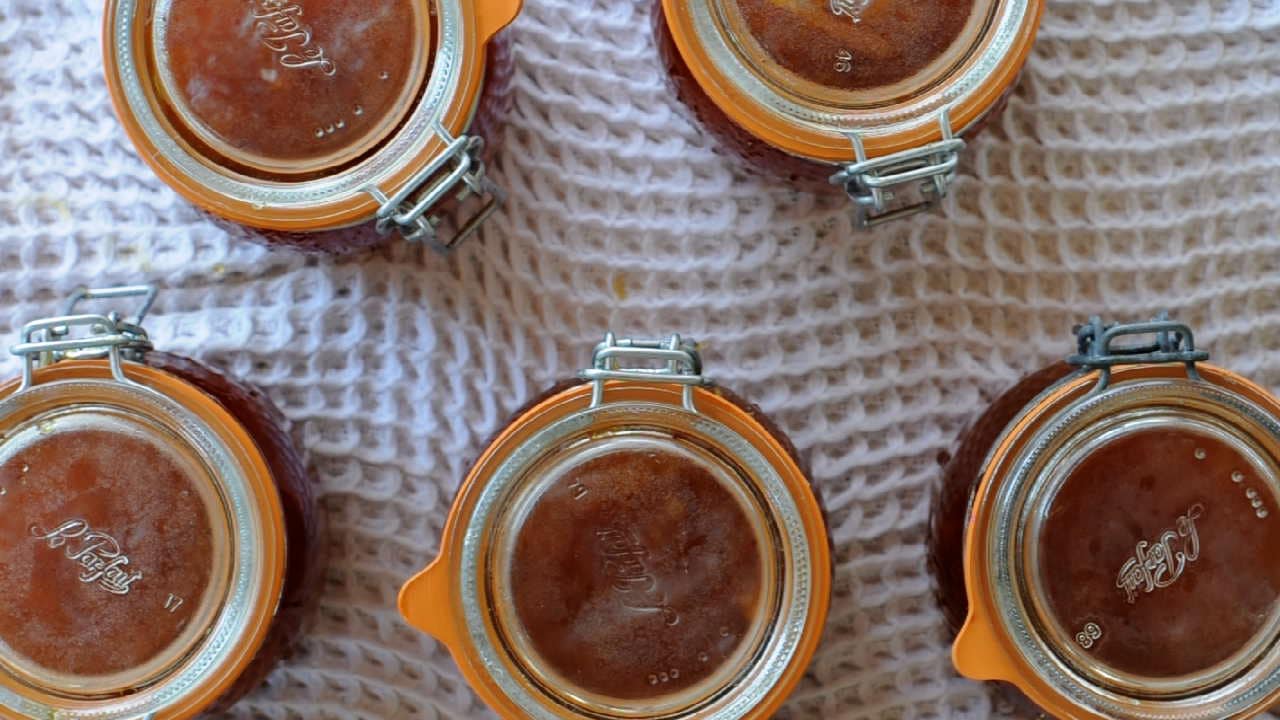
- Seal the jars: To properly seal the jars, wipe the rims with a clean, damp cloth to remove any residue. Place a new, warm lid on the jar, ensuring that it is centered and secure. Tighten the screw band just until it's fingertip-tight. This will allow you to safely store the marmalade without worrying about spoilage.
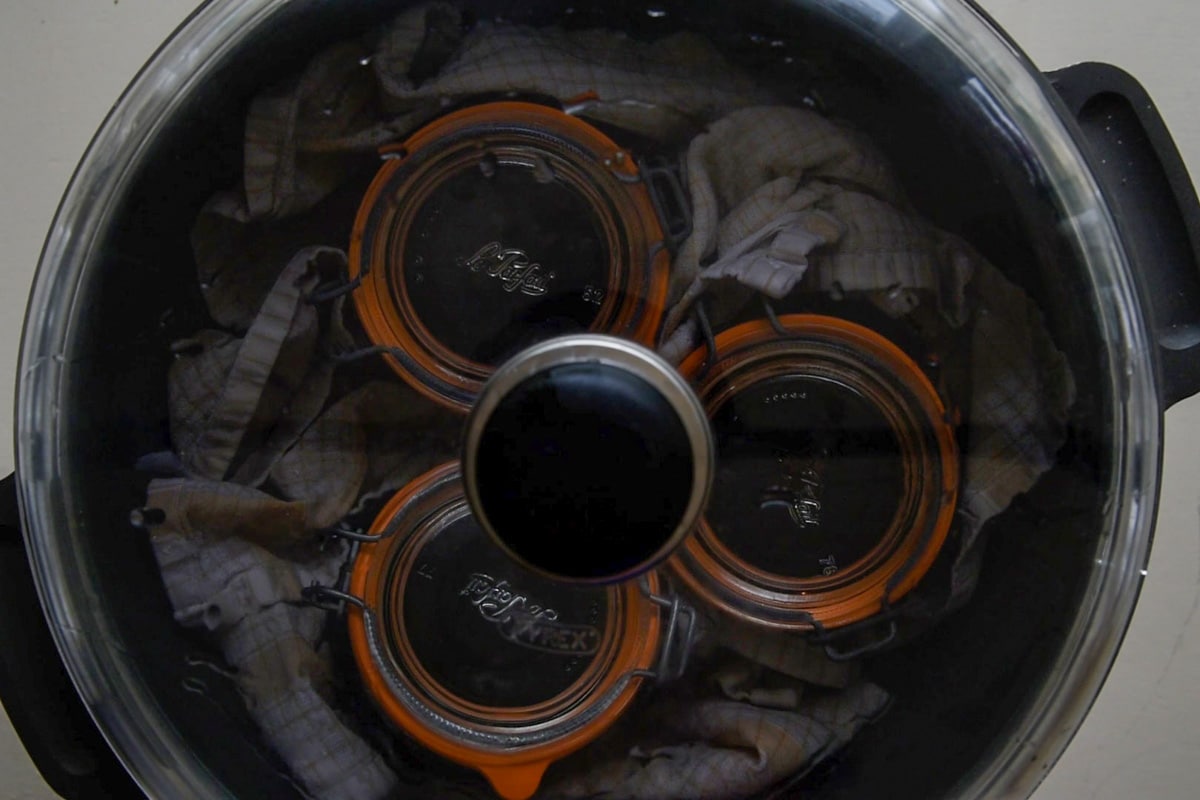
- Process the jars: For safety purposes, it's essential to process the filled jars in a boiling-water canner for 10 to 15 minutes. You can also boil them covered with water a few inches/cm above the lid. This step ensures that the jars are properly sealed and free of harmful microorganisms.
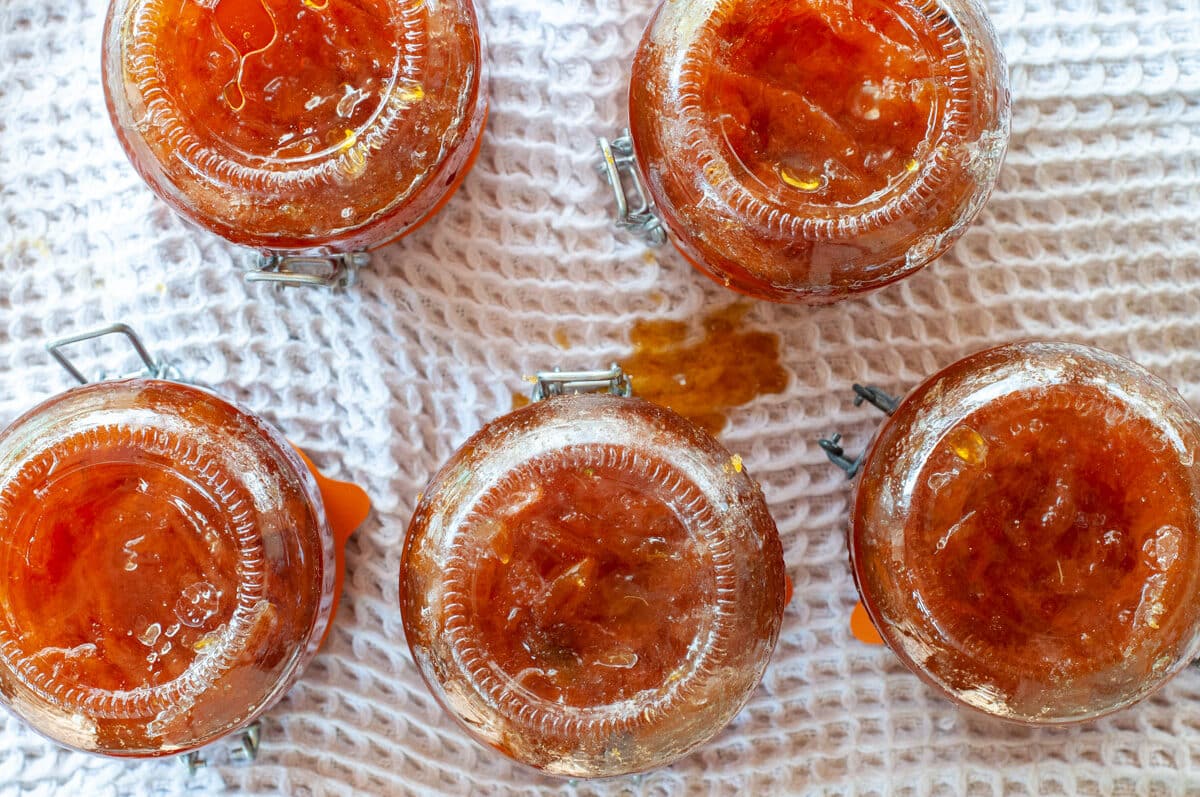
- Storage conditions: Ideally, bitter orange marmalade should be stored at room temperature (approximately 68°F or 20°C) in a cool, dark, and dry place like a pantry or cupboard. Properly sealed jars can last for up to a year when stored correctly. Label with dates
Hint: After opening the jars, refrigerate your marmalade and use it within a few weeks.
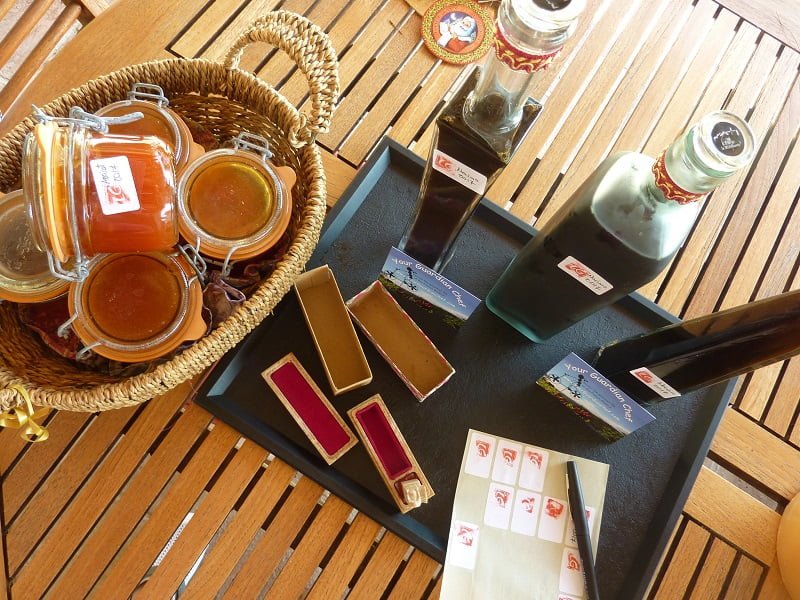
Uses and Pairings
Bitter orange marmalade is a versatile ingredient that can elevate your dishes in various ways. Not only does it add a unique flavor to your meals, but it also enhances your culinary experience.
Breakfast and Toast
Start your day with the delicious taste of bitter orange marmalade on your morning crusty pieces of toast.
Its tangy sweetness pairs well with the crunchiness of toast, providing a delightful contrast in textures.
Feel free to enjoy it on other breakfast breads such as croissants, muffins, and even crepes.
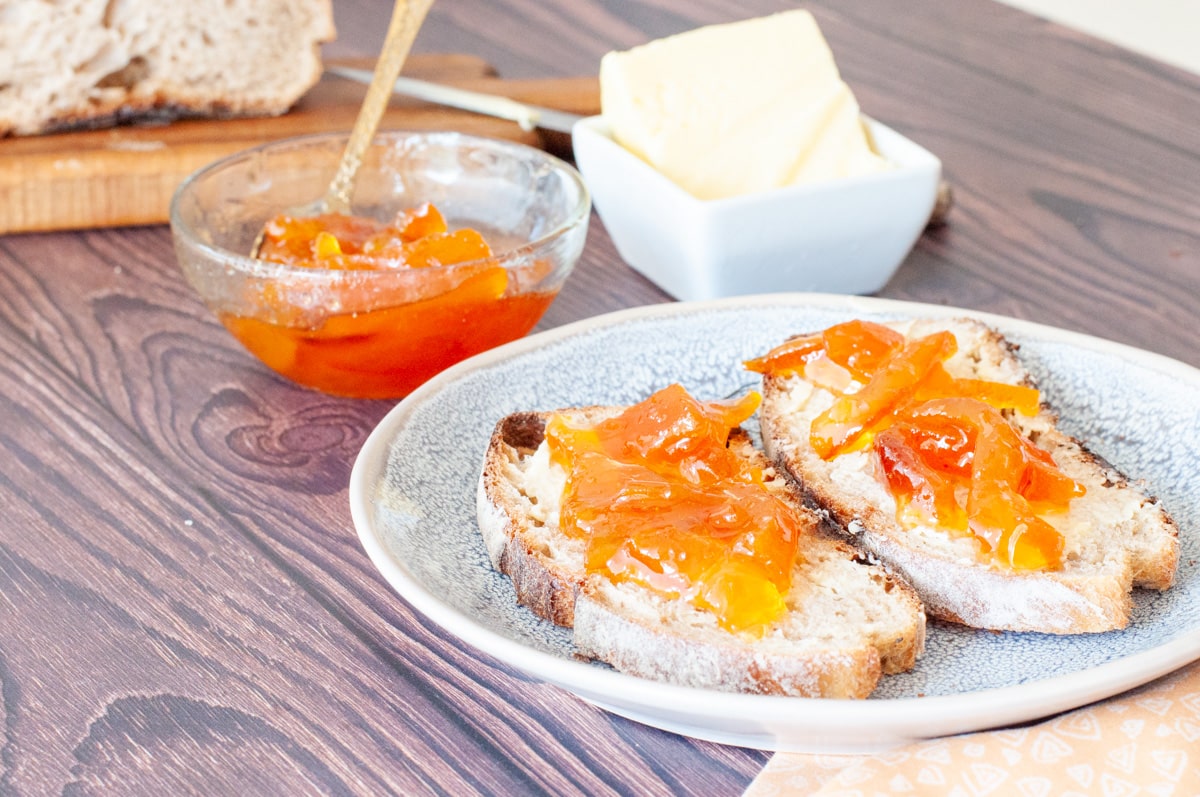
Desserts and Sauces
Incorporating bitter orange marmalade into desserts and sauces will add an interesting twist to classic recipes.
You can create a simple glaze for cakes and pastries by combining the marmalade with some icing sugar or use it as a filling in pies and tarts, such as in this crostata jam recipe.
Mix the marmalade with some liqueur or juice to make a delectable sauce and serve over ice cream, cheesecake, or a fruit salad.
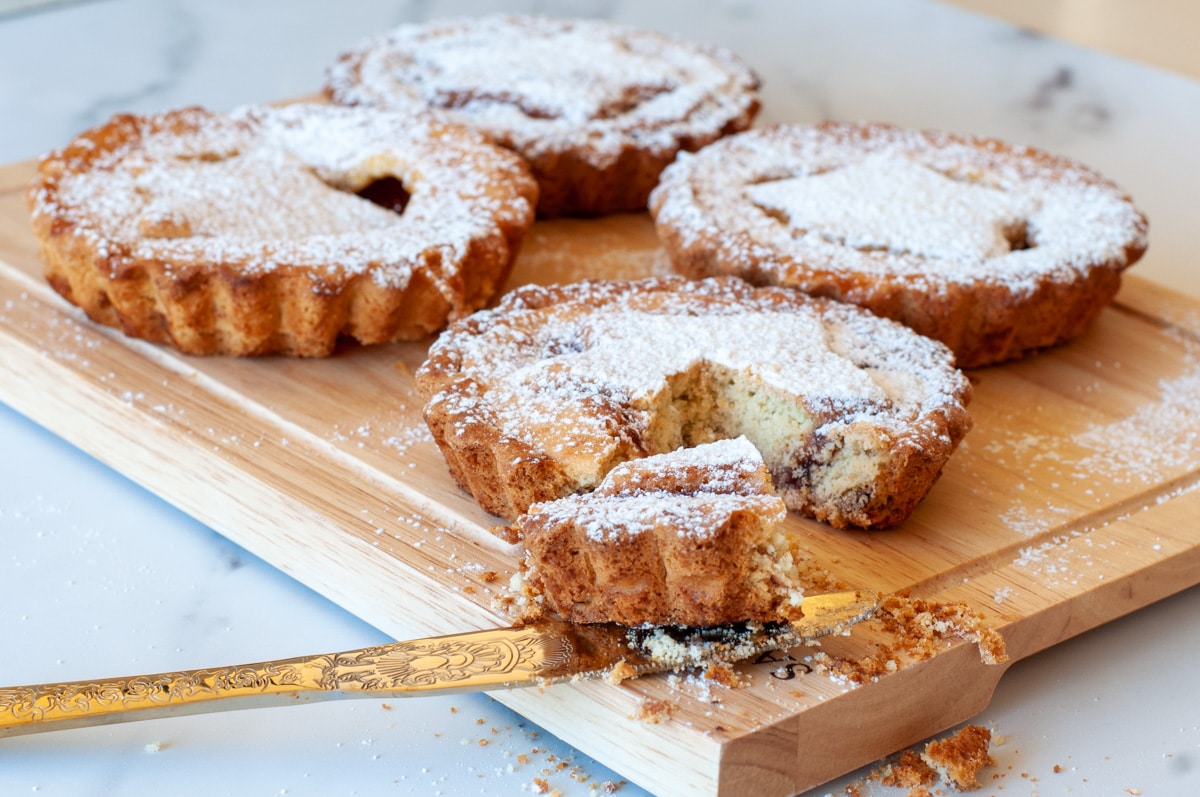
Marinades and Salad Dressings
You can also make use of bitter orange marmalade in your savory dishes as a marinade or salad dressing.
It works especially well for grilled meat, pork loin, poultry, or tofu.
Simply combine the marmalade with some soy sauce, vinegar, and spices to create a tasteful marinade.
This will give your dishes a hint of citrusy sweetness while keeping the carbs in check.
Mix it with oil, vinegar, and mustard to create an innovative salad dressing that gives your greens a fresh and tangy kick.
Incorporating bitter orange marmalade into your meals will give them an exciting and unexpected flavor.
Embrace its versatility and experiment in your kitchen with various combinations to find your favorite pairings.
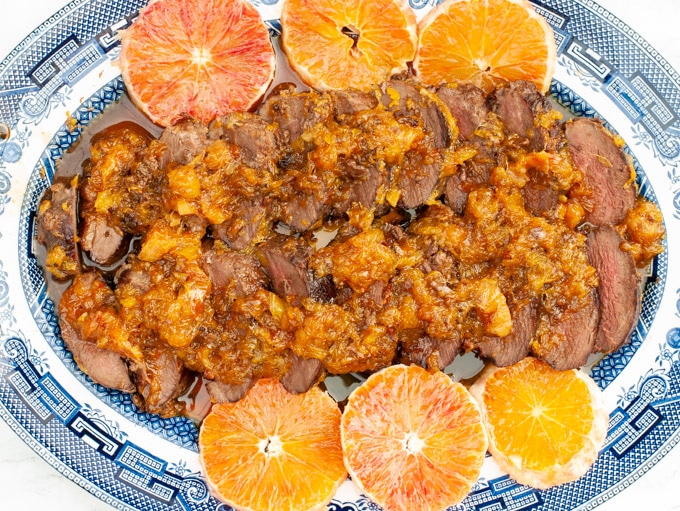
Variation
If you're unable to find sour oranges or prefer a milder flavor, grapefruit can be a great alternative.
Much like sour oranges, grapefruits are part of the citrus fruit family, with their unique balance of sweet and bitter tastes making them an interesting choice for marmalade.
To prepare grapefruit marmalade, you can use a similar recipe to that of sour orange marmalade, adjusting the sugar content as necessary to account for the lower bitterness of the fruit.
Additionally, you can mix grapefruit with other citrus fruits like blood orange, bergamot orange, navel orange, or lemon for a more complex flavor profile in your spread.
You can add Grand Marnier or whiskey to your marmalade for a new twist, or even better, your own Orange liqueur Curacao
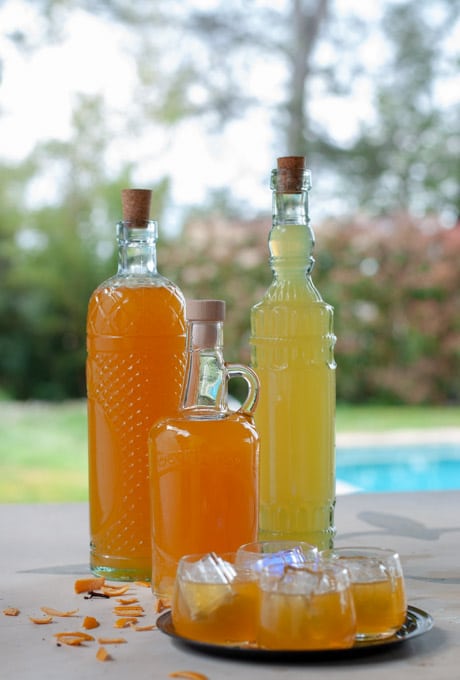
History and Origin of Bitter Oranges in Europe
The Romans were the first to grow oranges in Europe around the 1st century AD.
They cultivated these fruits from the seeds of Persian oranges imported from Spain and Morocco.
Eventually, a better and more resistant variety, the bitter Seville oranges, was developed.
These oranges were primarily used for making liqueurs, gins, and jams.
They were also consumed by sailors as a preventive measure against scurvy.
Sweet oranges remained almost unknown until the 1400s, initially considered a luxury food; they spread widely in Spain, Italy, and Morocco.
They only became famous throughout Europe around the middle of the 1600s.
The various expeditions following Columbus's journey spread orange trees in America, and today Brazil and the USA are the largest producers.
In case you've ever wondered if the name or the fruit came first, the word "orange" derives from the Sanskrit 'Narangah,' meaning "favorite fruit of elephants."

FAQ
The ideal sugar-to-fruit ratio for making marmalade is generally between 1:1 and 2:1, depending on your taste preference and the natural sweetness of the fruit you're using. If you prefer a less sweet marmalade, you can use a 1:1 ratio, but remember that sugar also aids in setting and preservation. If you're unsure, it's best to start with a 1.5:1 sugar-to-fruit ratio and adjust from there.
To ensure a perfect set for your marmalade, follow these tips:
1. Use a candy or digital thermometer to monitor the temperature. Your mixture should reach 220°F (104°C) to achieve the ideal setting point.
2. Cook the marmalade at a slow, controlled boil to allow the pectin to fully activate and the sugar to dissolve properly.
3. Test your marmalade set by placing a small amount on a cold plate and letting it cool. If it wrinkles when gently pushed with a finger, it's ready.
4. Don't overcook. Overcooking marmalade can cause it to become too thick or even caramelize, affecting its texture and taste.
Bitter oranges, also known as Seville oranges, are ideal for making marmalade due to their high pectin content and distinctive flavor. However, if bitter oranges are not available, you can use other varieties like Valencia or Navel oranges, along with the addition of some lemon juice to provide extra pectin and tartness.
Yes, you can use other citrus fruits for making marmalade, such as lemons, grapefruits, or bergamot, alone or in combination with oranges. Keep in mind that some citrus fruits, like grapefruits, may require less sugar content to balance their tart flavor.
Properly stored in a cool, dark place, homemade orange marmalade can last for up to 12 months unopened. Once opened, it should be refrigerated and consumed within 3 months. To prolong its shelf life, make sure to use sterilized jars, and always use a clean utensil when serving the marmalade to avoid introducing bacteria and mold to the jar.
More recipes with oranges
If you are making any of this bitter orange marmalade, leave your comment below I would like to hear from you. You can find more delicious ideas if you FOLLOW ME on Facebook, YouTube, or sign up to my newsletter.

📋Traditional Sicilian Bitter Orange Marmalade Recipe
Ingredients
- 2 lb cooked peeled bitter oranges
- 3 lb caster sugar
Equipment
Instructions
Day 1
- Boil the whole bitter oranges in water until they become so soft that you can pierce them from side to side with a needle.
- Drain them and place them in cold water
Day 2 and 3
- Leave them soaking in water for 2 days, changing the water 3 times per day
Day 4
- The next day drain them and let them dry as much as possible2 lb cooked peeled bitter oranges
- With a sharp knife, cut the orange peel into small slices removing the inner membranes and the seeds
- Squeeze all the remaining juices and pour them with the oranges
- Weight the oranges and calculate the amount of sugar as 1.5 times the weight of the fruit (for 1 lb of oranges add 1.5 lb of sugar)3 lb caster sugar
- Place the oranges and the sugar in a large pan to simmer at medium heat for 2 hours until it reaches the right consistency
- Test the desired consistency before transferring the marmalade into sterilized jars.
- Seal the jars while still hot, and let them cool at room temperature.
- Use a caner or boil the jars covered with water for 5 to 10 minutes to sterilize the,
Video
Notes
Top tips
When cooking the marmalade, you should pay attention to the cooking time and temperature. Generally, marmalades need to be simmered for a few hours to achieve the desired set and texture. This process also allows the flavors to meld and develop, resulting in a better taste. Keep an eye on the marmalade, and make sure to stir occasionally to prevent sticking and scorching. Once your marmalade has reached its desired set and texture, carefully transfer it into sterilized jars, leaving enough room for the lids. Properly seal the jars and store them in a cool, dark place.Preserving in jars
- Sterilize the jars: Before storing your marmalade, make sure to sterilize the jars. You can do this by boiling them in water for about 10 minutes or washing them in the dishwasher. This will help eliminate bacteria that may affect the freshness of your marmalade.
- Fill the jars: When your marmalade has finished cooking, carefully ladle it into the sterilized jars. It is important to fill the jars when both the marmalade and jars are still hot, as this will help create a vacuum seal once they cool down.
- Seal the jars: To properly seal the jars, wipe the rims with a clean, damp cloth to remove any residue. Place a new, warm lid on the jar, ensuring that it is centered and secure. Tighten the screw band just until it's fingertip-tight. This will allow you to safely store the marmalade without worrying about spoilage.
- Process the jars: For safety purposes, it's essential to process the filled jars in a boiling-water canner for 10 to 15 minutes. You can also boil them covered with water a few inches/cm above the lid. This step ensures that the jars are properly sealed and free of harmful microorganisms.
- Storage conditions: Ideally, bitter orange marmalade should be stored at room temperature (approximately 68°F or 20°C) in a cool, dark, and dry place like a pantry or cupboard. Properly sealed jars can last for up to a year when stored correctly.
Nutrition








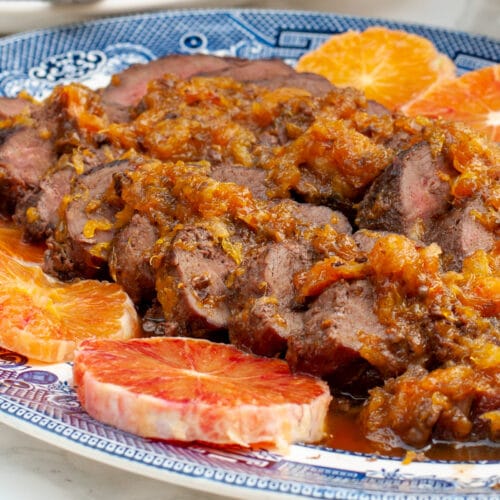

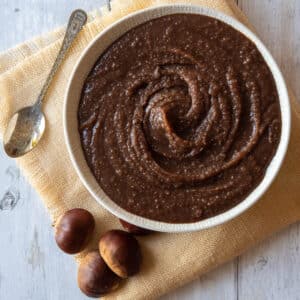
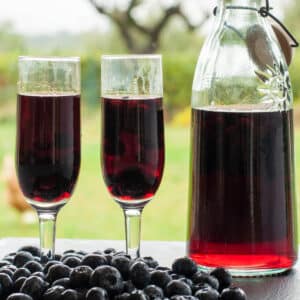

Leave a Reply